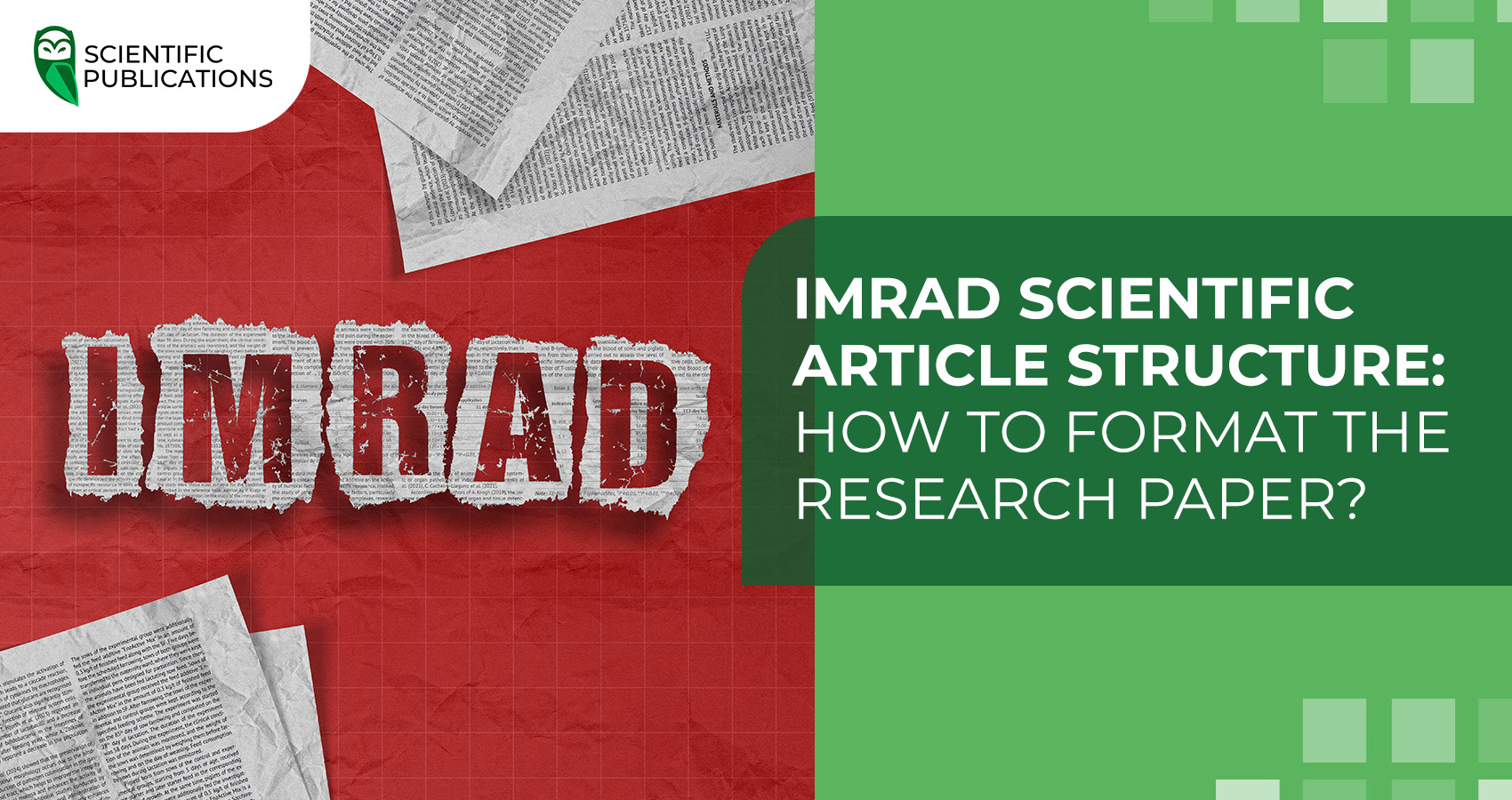IMRAD is one of the most common formats for structuring scientific articles. Almost all papers submitted for publication in international journals and databases are formatted according to this structure. What are the main sections that a scientific article should contain, and how to format it correctly in accordance with IMRAD?

IMRAD structure
IMRAD is a generally accepted format for structuring scientific articles that reflects the logic of the research and promotes a consistent presentation of the material. It is widely used in the preparation of articles and is the standard for scientific publications in most international scientometric databases.
The foundations of IMRAD were laid in the second half of the nineteenth century, and the structure acquired its modern form in the twentieth century. The model of this structure was proposed by the French microbiologist and chemist Louis Pasteur. Its advantage is conciseness and compactness, which facilitates the literature review and allows scientists to quickly navigate scientific papers. The name IMRAD is an abbreviation in which each letter stands for a separate section of a scientific paper.

There is a debate in academic circles about the meaning of the letter «A» in the acronym IMRAD. There are two main views on this issue.
According to the first one, «A» serves only as an «and» conjunction connecting the «Results» and «Discussion» sections.
The other approach suggests that «A» stands for «Analysis» – an important stage of research that involves a detailed analysis of the data obtained before discussing them.
Sections of a scientific article according to the IMRAD structure
Introduction section
The Introduction is the initial section of a research paper, so it is important to clearly state the main research question. The following key aspects should be considered in this section:
- Relevance. Why is the chosen topic important? What practical or theoretical problems does it solve?
- Literature review. What research already exists on the topic? What aspects remain insufficiently studied?
- Research objective. What contribution does the author plan to make? What questions are they looking for answers to?
- Hypotheses or research questions. What assumptions are being made? What aspects require more detailed analysis?
Methods section
This section is devoted to a detailed description of the research process. The author should explain the principles of work, covering the following aspects:
- Research methodology – the approach and main methods used
- Tools – tools and technologies used at each stage
- Data collection procedure – how, when and by what methods the information was obtained
- Duration of the study – the timeframe of the work
It is important to focus on describing the methodological framework, avoiding analysis of results or preliminary conclusions.
Results section
This section is intended to present the results obtained and is usually the longest in the paper. The author should formulate the key findings by summarising the main data obtained during the research. It is important that the presentation is clear and logical.
When presenting the results, the same sequence should be followed as in the research Methods section. All stages of work and the results obtained at each stage should be described in chronological order.
For a better perception of the material, you should use visualisation: graphs, tables, diagrams. Such elements will help to structure the information, make it more visual and emphasise the significance of the data obtained.
Discussion section
The Discussion section analyses the significance of the results obtained in the context of previous studies by other researchers and the relevance of the topic discussed in the article.
At this stage, it is important to compare your results with the achievements of other researchers, in particular, to pay attention to common features, such as similarities in methodology, materials and tools used, as well as results, conclusions and recommendations.
It is equally important to highlight the differences: innovative aspects of your work, new data obtained, unique observations, as well as specific methodological approaches used.
The authors need to justify why the results are important and interesting, as well as identify their possible areas of application (practical significance).
.png)
The most common mistakes in a scientific article with the IMRAD structure:
- Lack of clear conclusions – the article does not provide clear results or conclusions about the results obtained.
- Unclear importance of the study in the introduction – the introduction does not explain why the study is important and relevant.
- Vagueness and lack of structure in the Methods section – the methodology is not detailed and the structure of the section is unclear.
- Incorrect interpretation of the Results section – this section is not only a report on the data obtained, but also comments and explanations that help to understand the significance of the results in the context of the study.
Structuring a scientific article is an important stage of research that requires a responsible approach. Using the IMRAD format allows you to organise materials and information in a clear and consistent manner. However, it should be remembered that even the best-structured article will not matter without thorough research, up-to-date data, clear methodology, and reliable results.
Need help with publishing a scientific article? Contact “Scientific Publications”! We will help you prepare your work in accordance with the IMRAD structure and publish your article in Scopus, Web of Science, international journals, and in the journals of the Higher Attestation Commission (HAC). Get a free consultation with our manager by filling out the form below. Together we will achieve successful publication!





